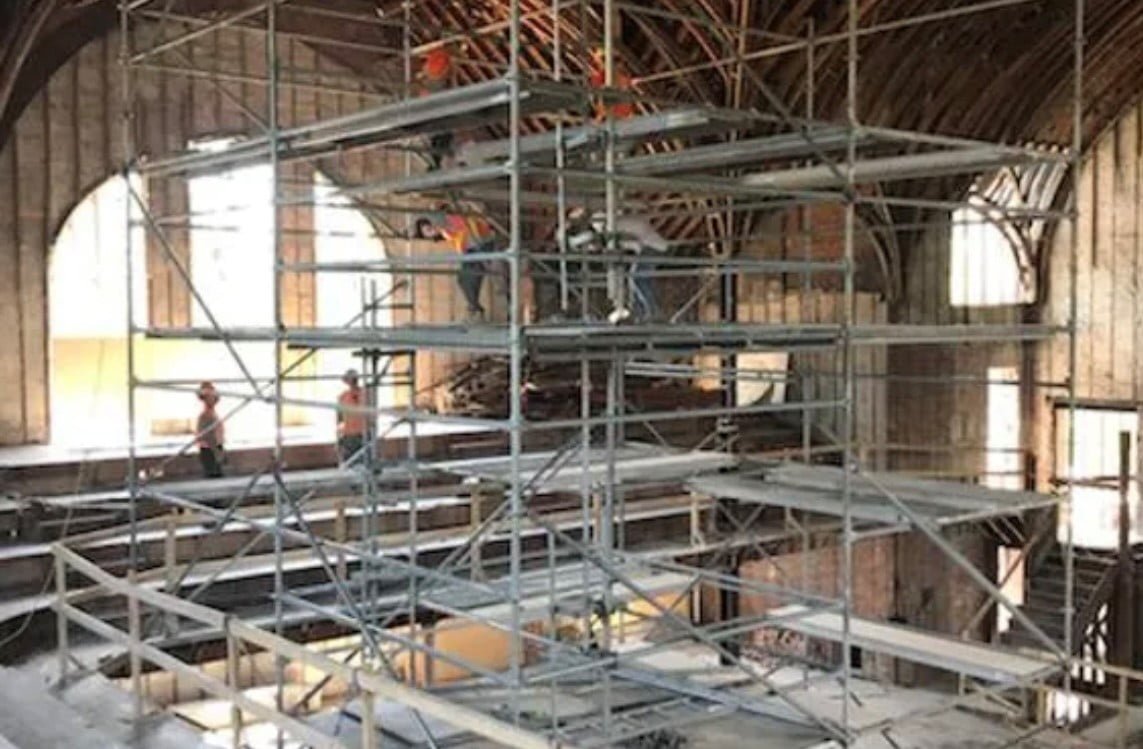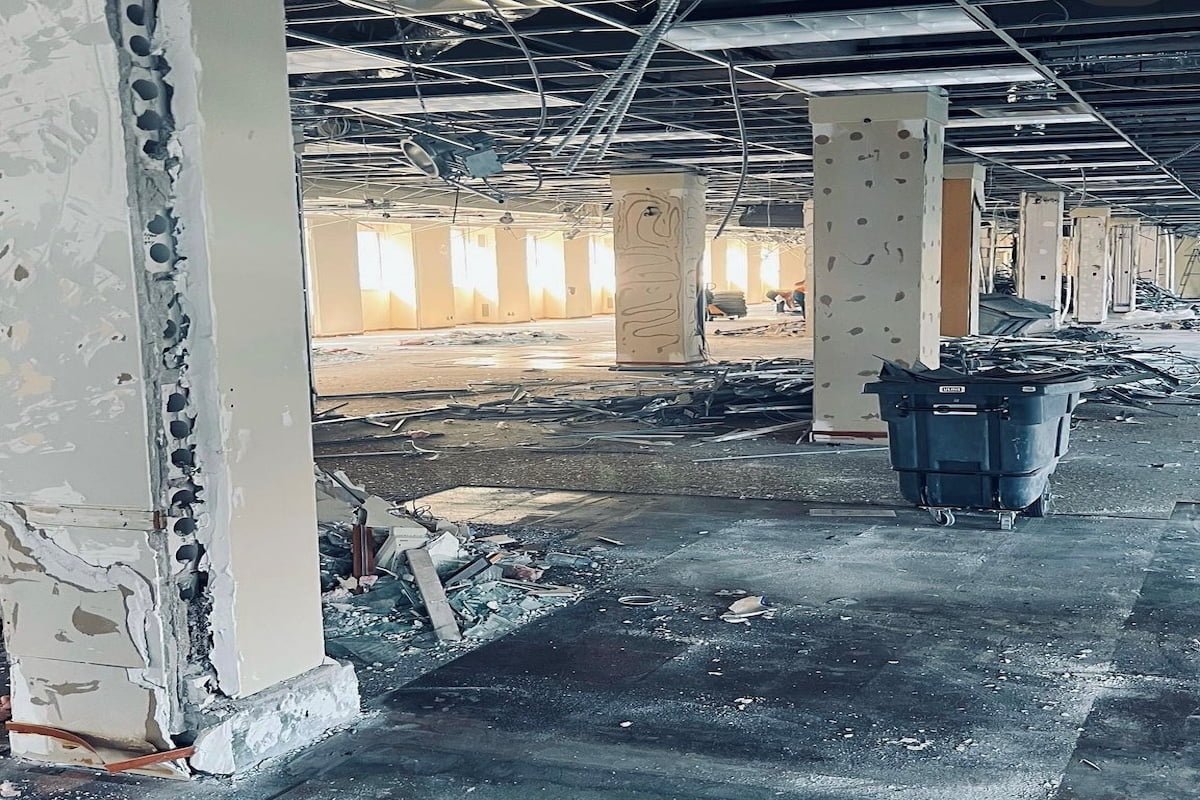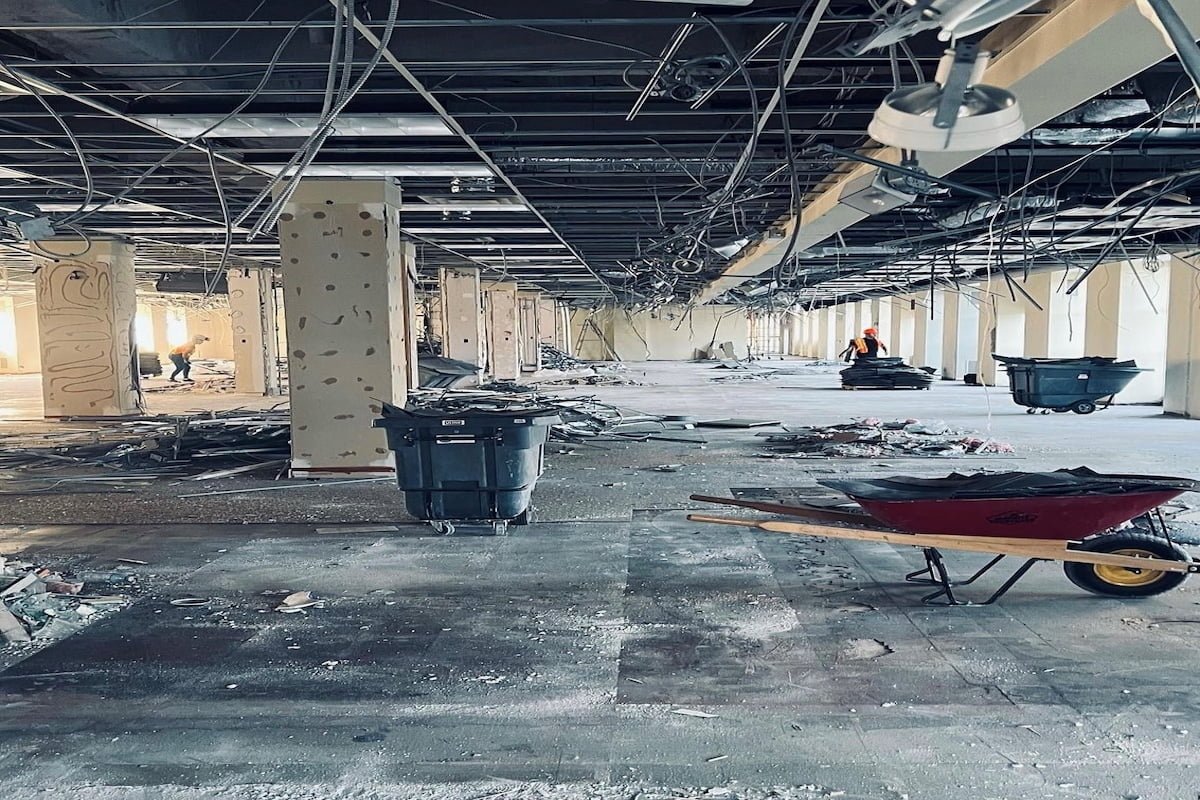Interior Demolition
Discover How Astro Environmental Can Help You With Safe, Efficient, and Professional Demolition
What Is Interior Demolition?
Interior demolition is the process of removing and dismantling the interior components of a building, such as walls, floors, ceilings, fixtures, and finishes. This type of demolition is typically done when renovating or remodeling a space to change its layout or update its design. Interior demolition involves careful planning and execution to minimize damage to the structure and surrounding areas. It may also include the removal of hazardous materials, such as asbestos or lead-based paint, in compliance with safety regulations.
What Is The Structural Demolition Process?
The interior demolition process involves removing or dismantling structures, fixtures and finishes inside a building. It includes steps such as planning and preparation, asbestos and hazardous material survey, disconnecting utilities, removing fixtures and equipment, removing non-structural elements, making structural modifications, managing waste, and cleaning up the site. Safety measures should be prioritized throughout the process.

When Is Interior Demolition Necessary?

Interior demolition is necessary or desirable in various situations, including renovation or remodeling projects, repurposing of buildings, structural modifications, infrastructure upgrades, hazardous material removal, accessibility improvements, aesthetics and modernization, and space optimization. It is needed to modify, upgrade, repurpose, or improve the functionality, safety, aesthetics, or efficiency of a building’s interior.
What Are Important Considerations?
When contemplating interior demolition, it is important to consider several factors. Safety should be the top priority, with a detailed plan in place and trained personnel. Permits and regulations must be obtained to avoid legal issues. Asbestos and hazardous materials should be identified and removed. Structural integrity should be assessed with the help of a structural engineer. Salvageable materials should be considered for reuse. Environmental impact should be minimized through recycling and responsible disposal. Noise and disruption should be minimized through careful scheduling. Budget and timeline should be clearly defined. Future plans for the space should be taken into consideration. Consulting with professionals is recommended throughout the process.

The Interior Demolition Process
Pre-demolition preparation
Before starting the demolition, the area should be cleared of any valuables, furniture, or personal belongings. Hazardous materials like asbestos, lead-based paint, or mold may also need to be identified and properly handled.
Safety measures
Safety is paramount during demolition. The site should be secured with barriers, warning signs, and protective equipment like hard hats, gloves, goggles, and masks. Utilities such as electricity, gas, and water should be disconnected and sealed off to prevent accidents.
Soft strip-out
This entails removing non-structural elements like carpeting, tiles, drywall, ceiling tiles, light fixtures, cabinetry, plumbing fixtures, and electrical components. These materials are usually salvaged or disposed of as per local regulations.
Structural Demolition
Once the soft strip-out is complete, the actual structural demolition begins. Walls, partitions, flooring, and load-bearing elements are demolished using various tools and techniques like sledgehammers, jackhammers, excavators, wrecking balls, or even controlled explosives in rare cases. Structural demolition requires careful planning to avoid damaging adjacent structures or compromising the building’s integrity.
Waste management
As the demolition progresses, waste materials are generated and need to be managed properly. Recycling and salvaging materials whenever possible is encouraged to reduce environmental impact. Hazardous materials and waste should be handled and disposed of according to local regulations.
Final inspection
In some cases, a final inspection by local authorities or building inspectors may be required to ensure compliance with safety and regulatory standards.
It is important to note that the exact process may vary depending on the specific project, building type, local regulations, and any unique requirements or challenges involved.
Frequently Asked Questions About Interior Demolition
What types of debris are created during interior demolition?
During interior demolition, various types of debris are commonly created. Some of the most common types include:
1. Drywall: This is the most common type of debris generated during interior demolition. Drywall panels are often removed to expose the underlying structure or to create openings for new features.
2. Flooring: Old flooring materials like carpets, vinyl tiles, hardwood planks, or ceramic tiles are typically removed during interior demolition. These materials can produce a significant amount of debris.
3. Ceiling tiles: Suspended ceiling tiles made of materials like mineral fiber, fiberglass, or metal are often taken down during interior demolition. These tiles can break and create debris.
4. Insulation: Insulation materials such as fiberglass batts, foam boards, or spray foam are commonly removed during interior demolition. These materials can become loose and generate debris.
5. Cabinets and fixtures: Cabinets, countertops, sinks, toilets, bathtubs, and other fixtures are often demolished and removed during interior renovations. They can produce bulky debris.
6. Electrical wiring: When rewiring or upgrading electrical systems, old wiring and components may be removed, creating debris.
7. Plumbing pipes: During interior demolition, old plumbing pipes made of copper, PVC, or galvanized steel might need to be taken out, generating debris.
8. Structural elements: In some cases, interior demolition involves removing or altering structural components like load-bearing walls, beams, or columns. These materials can produce substantial debris.
9. Miscellaneous materials: Various other materials found in interiors, such as window frames, doors, trim, hardware, or ductwork, may contribute to the debris created during demolition.
It is important to properly handle and dispose of these debris types according to local regulations and environmental guidelines.
Are there any safety precautions to be taken when performing interior demolition?
Yes, several safety precautions should be taken during interior demolition to protect the workers and ensure a safe work environment:
1. Personal protective equipment (PPE): All workers involved in interior demolition should wear appropriate PPE, including hard hats, safety glasses or goggles, gloves, hearing protection, and respiratory protection if necessary.
2. Hazardous material identification: Before starting the demolition, identify any hazardous materials that may be present, such as asbestos, lead-based paint, or mold. Proper testing and handling procedures should be followed for these materials to prevent exposure.
3. Dust control: Interior demolition can generate a significant amount of dust. Implement measures to control dust, such as using plastic sheeting to isolate the work area, erecting containment barriers, using wet methods to suppress dust, and using HEPA-filtered vacuums to clean up debris.
4. Structural stability: Ensure that the structure being demolished is stable and secure. If necessary, use temporary supports or bracing to prevent collapses or accidents.
5. Electrical and plumbing isolation: Before removing fixtures or components, disconnect electrical and plumbing systems to avoid the risk of electrocution or flooding.
6. Tool and equipment safety: Ensure that all tools and equipment used in demolition are in good working condition and used properly. Follow manufacturer instructions and guidelines for safe operation.
7. Communication and coordination: Maintain clear communication and coordination among all workers involved in the demolition process to avoid accidents or injuries.
8. Training and supervision: Workers should receive proper training on demolition techniques, safety procedures, and the use of equipment. Additionally, experienced personnel should provide supervision and guidance throughout the demolition process.
By following these safety precautions, the risk of accidents, injuries, and exposure to hazardous materials can be minimized during interior demolition.
What is the best way to dispose of debris during an interior demolition?
The best way to dispose of debris during an interior demolition project is to follow proper waste management practices. Here are some options:
1. Recycling: Separate recyclable materials such as metal, wood, and concrete from the rest of the debris. Contact local recycling centers or waste management companies to arrange for recycling services.
2. Waste disposal facilities: Identify licensed waste disposal facilities in your area that accept construction and demolition debris. Ensure that they comply with local regulations and have appropriate permits for handling and disposing of different types of materials.
3. Dumpster or roll-off container rental: Renting a dumpster or roll-off container can provide a convenient and cost-effective solution for debris disposal. Ensure that the rental company follows proper waste management practices and disposes of the waste responsibly.
4. Hauling services: Hire professional hauling services that specialize in construction debris removal. They will have the necessary equipment and expertise to handle and transport the debris to the appropriate disposal facility.
5. Donation or reuse: If any items or materials are still in good condition and can be reused, consider donating them to charitable organizations or selling them through online platforms. This can help reduce waste and potentially offset some of the demolition project costs.
Always check local regulations and obtain necessary permits before disposing of debris. It is important to prioritize responsible waste management practices to minimize the environmental impact of the demolition project.
Is a permit required for interior demolition in Toronto?
Yes, a permit is required for interior demolition in Toronto, Ontario. The City of Toronto requires a demolition permit for any type of demolition work, including interior demolition. The permit ensures that the demolition is carried out safely and in compliance with local regulations. It is important to obtain the necessary permits before starting any demolition project to avoid penalties and ensure the proper handling and disposal of debris.